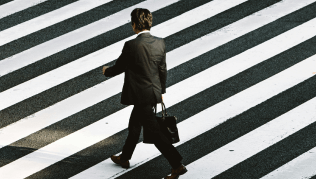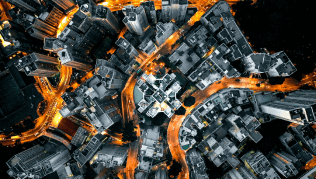Photography, like many other creative fields, has long been dominated by men. Although women have been involved in the development of photography since its early days, they have often faced significant obstacles in gaining recognition and equal opportunities in the industry. Today, the narrative is changing, with more women taking center stage in photography, producing groundbreaking work, and offering fresh perspectives on subjects ranging from social justice to personal identity. However, significant challenges remain for women photographers, making it essential to create more support systems and initiatives designed to empower them.
In this article, we will explore the challenges women face in the world of photography, the importance of supporting them, and how initiatives like ZiiP Foundation’s ‘Women in Photography’ are making a positive impact by fostering inclusion, opportunity, and visibility for female photographers.
Table of Contents
The Importance of Supporting Women in Photography
Photography plays a powerful role in shaping how we perceive the world. It’s not just about capturing images—it’s about storytelling, documenting experiences, and giving voice to perspectives that can influence societal change. For women in photography, their unique experiences, backgrounds, and viewpoints bring much-needed diversity to the medium. Supporting women in photography is critical for several reasons:
1. Diversity of Perspectives
When more women are given opportunities to share their work, the diversity of visual narratives expands. Historically, the portrayal of women and marginalized communities has been shaped by a predominantly male perspective, often leading to one-dimensional representations. Female photographers bring fresh perspectives, particularly in the way women, their bodies, and their experiences are depicted. By supporting women, the field of photography becomes richer, more inclusive, and better reflects the world’s complexities.
For example, photographers like Nan Goldin have used their work to explore themes of intimacy, relationships, and identity, offering deeply personal insights into subjects that were often considered taboo or overlooked by male photographers. Without these female voices, such stories might have remained untold or misrepresented.
2. Challenging Gender Stereotypes
Women in photography have long faced challenges when it comes to breaking free from traditional gender roles. Historically, women were relegated to domestic photography—portraying children or family life—while men were seen as the “serious” photographers documenting war, political events, or abstract art. By encouraging more women to enter the field and create work on their own terms, we challenge these outdated stereotypes.
Prominent female photographers such as Annie Leibovitz and Lynsey Addario have demonstrated that women are more than capable of capturing complex, high-stakes subjects, from the intimate portraits of celebrities to war zones and political unrest. Their success has opened doors for more women to take on diverse and challenging subjects, changing the way the world views female photographers.
3. Advancing Gender Equality
Supporting women in photography is not just about artistic representation; it’s also about advancing gender equality in the workplace. Historically, women have had fewer opportunities to exhibit their work, secure commissions, or access mentorship. By creating more inclusive environments, the photography world can set an example for other industries, showcasing how equal access to resources and opportunities leads to better, more diverse outcomes.
Many photography institutions and publications are increasingly recognizing the importance of giving women equal visibility and opportunity. For example, World Press Photo has introduced initiatives to support female photojournalists, recognizing that women bring unique perspectives and approaches to covering world events.
Challenges Faced by Women in Photography
Despite the strides made in recent decades, women in photography still face numerous barriers that hinder their progress. Some of the most common challenges include:
1. Underrepresentation in Exhibitions and Publications
One of the biggest challenges for women in photography is the underrepresentation of their work in major exhibitions, galleries, and publications. Male photographers often dominate these platforms, limiting the visibility of women’s work. According to a study by Artsy, in 2019, only 30% of artists represented in commercial galleries worldwide were women, highlighting a significant gender imbalance.
This lack of representation impacts female photographers’ ability to gain recognition, access funding, and build sustainable careers. Without adequate exposure, their work can be overlooked by curators, collectors, and institutions, preventing them from achieving the same level of professional success as their male counterparts.
2. Gender Bias and Discrimination
Women in photography continue to face gender bias and discrimination, both overt and subtle. This includes being stereotyped as less capable of handling certain subjects, like war photography or technical genres, and experiencing pay gaps or fewer opportunities compared to men. Female photographers may also face harassment or exclusion from male-dominated spaces, making it more challenging to advance in their careers.
Moreover, the photography industry has often glorified the “lone male photographer,” while women, especially those with family responsibilities, may struggle to achieve the same recognition in a system that favors men’s ability to travel freely and take on time-consuming projects.
3. Limited Access to Mentorship and Networks
Networking and mentorship are essential for success in any field, but women in photography often lack access to these crucial resources. Male-dominated industries can create a culture where women feel excluded from valuable professional connections, making it harder for them to gain guidance, support, and career advancement opportunities.
Mentorship programs designed specifically for women photographers can help address this issue by providing them with the tools and confidence they need to navigate the industry and overcome its barriers.
How Initiatives Like ZiiP’s ‘Women in Photography’ Will Empower Female Photographers
Recognizing the need to break down the barriers women face in photography, the ZiiP Foundation has launched a dedicated initiative called ‘Women in Photography’. This program aims to create opportunities for female photographers to showcase their work, gain recognition, and connect with mentors and industry professionals who can support their careers. Here’s how ZiiP’s initiative will empower women in photography:
1. Creating Visibility and Opportunities
ZiiP’s ‘Women in Photography’ initiative will provide a platform for female photographers to showcase their work through exhibitions, publications, and digital platforms. By curating shows that focus specifically on the work of women photographers, ZiiP aims to address the underrepresentation issue head-on. These exhibitions will not only give female artists the opportunity to display their work but also elevate their profiles within the broader photography community.
Additionally, ZiiP will work to secure opportunities for women photographers to gain exposure through partnerships with other galleries, festivals, and institutions. By amplifying the voices of women photographers, ZiiP is helping to ensure that their work receives the recognition it deserves.
2. Providing Mentorship and Professional Development
One of the core aspects of ZiiP’s initiative is the provision of mentorship programs tailored to the needs of women photographers. These mentorships will connect emerging photographers with established professionals, offering guidance on navigating the industry, refining artistic skills, and building sustainable careers.
Through workshops, seminars, and portfolio reviews, ZiiP will create opportunities for women to learn from mentors who have successfully overcome the challenges of the industry. These programs will foster growth, boost confidence, and help women photographers develop the skills needed to thrive in the competitive world of photography.
3. Encouraging Creative Risk-Taking and Experimentation
Women photographers often face pressure to conform to traditional styles or subjects to gain acceptance in a male-dominated field. ZiiP’s ‘Women in Photography’ initiative will encourage creative risk-taking and experimentation by providing a supportive environment where women can explore new ideas, techniques, and genres without fear of judgment or rejection.
By fostering a culture of innovation, ZiiP aims to empower women photographers to push the boundaries of their art and contribute to the ongoing evolution of photography. Whether they are working in documentary photography, fine art, or experimental photography, women will be encouraged to develop their unique voices and challenge conventional narratives.
Conclusion
Supporting women in photography is essential not only for advancing gender equality but also for enriching the visual narratives that shape our understanding of the world. Women bring unique perspectives and experiences to photography, offering stories that have historically been overlooked or underrepresented. However, despite their significant contributions, women in photography still face numerous challenges, from underrepresentation in exhibitions to gender bias and limited access to professional networks.
Initiatives like ZiiP Foundation’s ‘Women in Photography’ are vital in breaking down these barriers. By creating opportunities for women to showcase their work, providing mentorship and professional development, and fostering a supportive environment for creative experimentation, ZiiP is helping to ensure that female photographers are empowered to achieve their full potential.
As the photography world becomes more inclusive, the diverse voices and perspectives of women will continue to enrich the field, offering new narratives and expanding the boundaries of what photography can achieve. By supporting women in photography, we create a more vibrant, diverse, and equitable industry for everyone.

